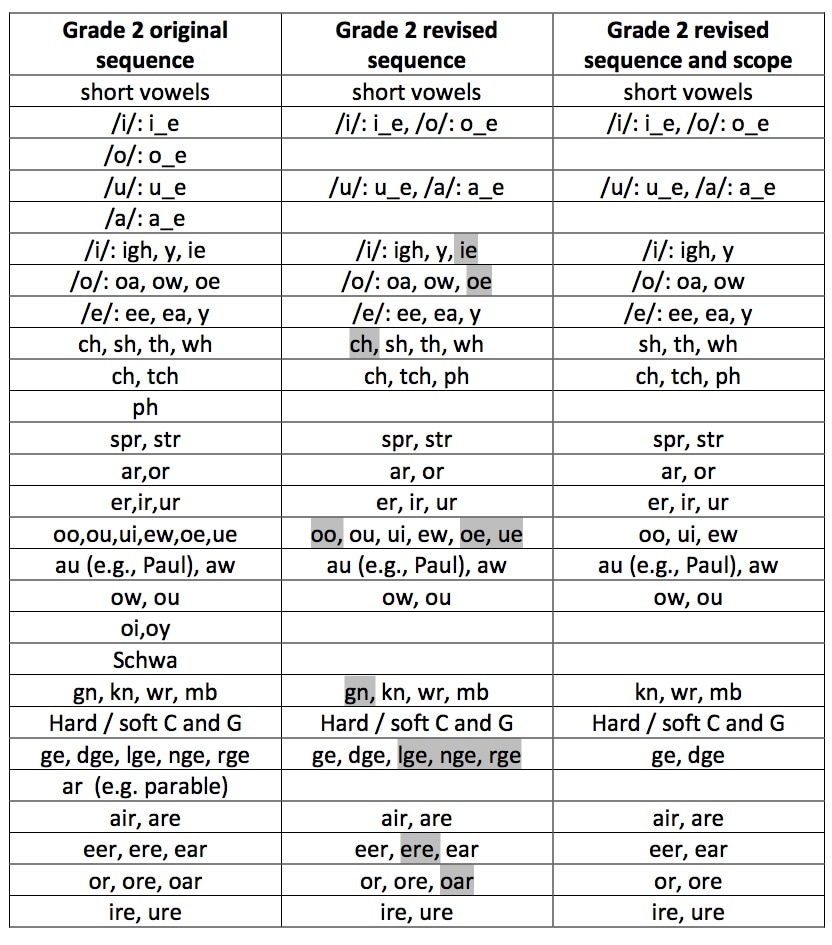|
Slow is not a bad thing, nor is focused. Sure, slowpoke is an unflattering description, and focused can be synonymous with single-minded. But when we look at slow and focused through the lens of instruction, we understand that slowing down and focusing provide us with a chance to thoroughly teach material and give our students opportunities to master critical skills. Adopting a slower pace and a more targeted curriculum allows for richness and depth in lessons. And a slow and focused mindset gives both teacher and students the opportunity to enjoy the learning process.
When it comes to making changes in spelling instruction, a fine place to start is tightening your spelling sequence. Some spelling sequences are simply too long, with too many weekly lessons. The longer the sequence of lessons (25 weeks, 27 weeks, 30 weeks), the more you are forced move quickly to cover all the material. My suggestion is to modify your sequence by strategically condensing its number of weeks or steps. Having fewer lessons gives you time to reteach concepts and patterns when children haven’t mastered them in the first cycle of instruction. When you have space in your sequence to accommodate re-teaching, you won’t need to push kids into a new concept when they have yet to master the previous one. The chart at the end of this post shows a sequence with fewer lessons. I reduced the number of weekly lessons by doubling up on vowel-consonant-e lessons (which allows me to teach how vowel sounds compare and contrast), taking out a lesson that is thoroughly covered in third grade (oi/oy), deleting the schwa lesson, combining ch, tch, and ph into one lesson, and throwing out a lesson that teaches an infrequent spelling pattern (ar, e.g. parable). After you’ve tightened the sequence, narrow the scope. Look over the spelling concepts introduced each week and consider reducing how many you teach in each lesson. If you see a lesson that teaches five or six spelling patterns, identify the low-frequency spelling patterns and take them out. I believe in pruning low-frequency spelling patterns for two crucial reasons. First, there is much to teach and little time to teach it. Why spend valuable time teaching patterns that students don’t often encounter? Many vowel patterns occur infrequently. In fact, the ie spelling of the long i vowel sound and the oar spelling of /or/ occur in fewer than 2% of words with those sounds! So why teach the oar spelling when a second grader might encounter it in oar and board and that’s about it? And why teach the ie pattern when pie is the only word a second grader might write? Teach the correct spelling of these words if and when you need to, not as part of your regular spelling instruction. Second, presenting fewer unknowns in any given lesson is best instructional practice. Teachers often analyze a complex task in order to fully understand it and effectively present it. Once the discrete steps are understood, the task can be taught using the law of one unknown: present one unknown piece of learning, have students practice it, assess students for its mastery, and once it is mastered, move on. But when it comes to spelling, teachers often teach four, five, six, or more spelling patterns or concepts per week. While we probably can’t afford to teach only one unknown pattern,we also shouldn’t allow ourselves to be pushed into presenting more than two to younger children and three or four to older ones. If we present too many patterns or concepts at once, students fail to learn, become frustrated, and may give up. Lessening the cognitive load by presenting fewer spelling concepts in each lesson allows us to build success for students, thereby strengthening the cycle of success, motivation, and learning. In the chart below you can see how I took a 27-step second grade sequence, reduced the number of steps to 21, and then reduced the number of spelling patterns presented in eight of those remaining steps. With a scope and sequence like this, you can move from “memorize-and-move-on” instruction to transformed instruction that produces more enjoyable lessons, gives kids a real shot at spelling mastery, and bolsters the reading and writing skills of struggling learners. Comments are closed.
|
Mark WeaklandI am a teacher, literacy consultant, author, musician, nature lover, and life long learner.
|

 RSS Feed
RSS Feed